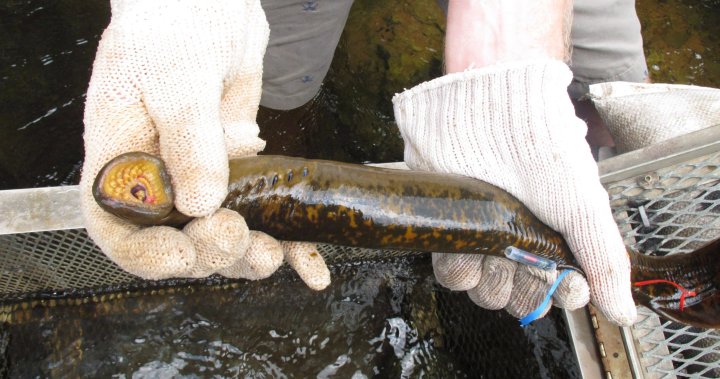The Great Lakes, a vital freshwater ecosystem and a cornerstone of a multi-billion dollar fishery, are facing a resurgence of a formidable foe: the sea lamprey. This invasive, parasitic species, accidentally introduced in the early 20th century, has witnessed a significant population rebound in recent years, largely attributed to disruptions in control efforts caused by the COVID-19 pandemic. The Great Lakes Fishery Commission, the body tasked with managing this persistent threat, reports alarming increases in sea lamprey numbers across all five lakes, jeopardizing the ecological balance and economic stability of the region. This resurgence underscores the critical need for sustained and innovative control measures to protect this invaluable natural resource.
The sea lamprey’s parasitic life cycle poses a severe threat to native fish populations. Equipped with a circular mouth filled with rows of sharp teeth and a rasping tongue, these eel-like creatures latch onto their prey, draining their bodily fluids and ultimately leading to their demise. A single sea lamprey can kill up to 40 pounds of fish during its parasitic phase, highlighting the devastating impact of unchecked population growth. Before the implementation of control measures, sea lampreys decimated fish populations, causing significant ecological damage and crippling the fishing industry. The resurgence witnessed in recent years echoes this historical devastation, underscoring the importance of continued vigilance and proactive management.
The implementation of sea lamprey control programs in 1958 marked a turning point in the fight against this invasive species. Through a combination of targeted treatments, barrier construction, and ongoing research, these programs achieved remarkable success, reducing sea lamprey populations by over 90%. This hard-won progress, however, faced a significant setback during the COVID-19 pandemic. Restrictions and logistical challenges hampered control efforts in 2020 and 2021, allowing millions of sea lamprey larvae to survive and mature, contributing to the current population surge. The consequences of this disruption are now evident, with sea lamprey numbers exceeding pre-pandemic averages across all five Great Lakes.
The magnitude of the resurgence varies across the Great Lakes. Lakes Superior and Ontario have experienced the most dramatic increases, while populations in Lakes Michigan, Huron, and Erie have shown signs of stabilization as control efforts gradually resume. The Great Lakes Fishery Commission acknowledges that this surge was anticipated given the reduced control efforts during the pandemic. However, the commission emphasizes the need for continued vigilance and proactive management to mitigate the long-term impacts of this resurgence. The commission projects that elevated sea lamprey numbers may persist for the next year or two before declining, emphasizing the need for sustained and intensified control efforts.
The fight against the sea lamprey requires a concerted, binational effort. Canada and the United States collaborate through the Great Lakes Fishery Commission to implement and maintain control programs. These programs employ a multi-pronged approach, including the application of lampricides, which target sea lamprey larvae in their stream habitats; the construction of barriers to prevent adult sea lampreys from reaching spawning grounds; and ongoing research to develop innovative control methods. The commission stresses the importance of continued investment in these programs and the exploration of new technologies to ensure the long-term health of the Great Lakes ecosystem.
The resurgence of sea lampreys in the Great Lakes serves as a stark reminder of the vulnerability of even the most robust ecosystems to invasive species. The disruptions caused by the COVID-19 pandemic, though unforeseen, highlighted the critical importance of sustained and adaptable management strategies. The ongoing collaborative efforts between Canada and the United States, coupled with continued research and innovation, offer hope for containing the sea lamprey threat and safeguarding the ecological integrity and economic vitality of the Great Lakes for generations to come. The challenge remains significant, but with continued vigilance and proactive management, the Great Lakes can weather this storm and maintain their status as one of the world’s most important freshwater ecosystems.










